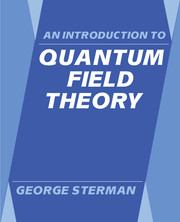Preface
Published online by Cambridge University Press: 05 August 2012
Summary
The search for the underlying structure of physical reality is as old as speculative thought. Our deepest experimental insights to date are expressed in the language of quantum field theory, in terms of particles that interact at points in space–time, subject to the constraints of special relativity. The theoretical developments that lead to this portrait are the subject of this book. Its aim is to provide a self-contained introduction to relativistic quantum field theory and its applications to high-energy scattering. Some of the methods described predate quantum theory, while others are quite recent. What makes them vital is not only their considerable success thus far, but also the very limitations of that success.
There is every reason to believe that quantum field theory is not a closed chapter. A great deal of freedom remains in the choice of particles and their interactions within the field-theoretic description of fundamental processes. The ‘standard model’, which describes elementary processes as they are known at this time, is a grab bag of matter and forces, in which breathtaking theoretical elegance coexists with seemingly senseless arbitrariness. Whatever the next step in our understanding of elementary processes, however, the elements of quantum field theory will remain relevant to their description.
- Type
- Chapter
- Information
- An Introduction to Quantum Field Theory , pp. xiii - xviiiPublisher: Cambridge University PressPrint publication year: 1993



